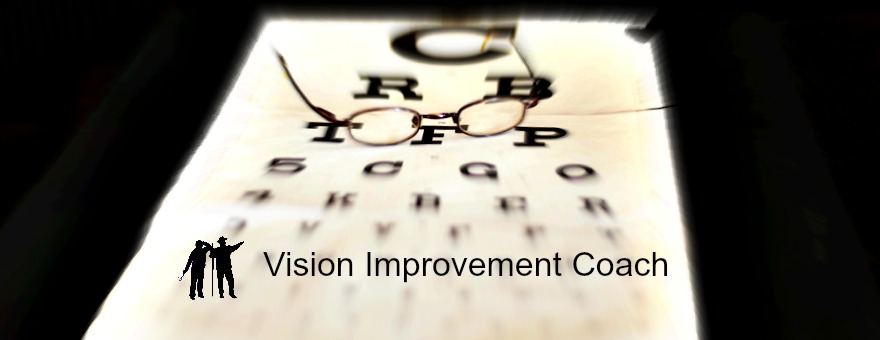Pointing the Way to Better Eyesight
Edging Exercise to Develop Clear Relaxed Central Vision
The edging exercise will help you develop proper habits for clear natural vision.
Your eyesight works by detecting contrast.
It searches out and finds meaning in contours, shapes, and edges. Also, remember clear eyesight is only possible when your visual system is relaxed.
And... relaxed eyesight occurs when you move and centralize.
This will get you moving and centralizing again. It's a wonderful practice to help tune into and move your central visual attention.
Look up and away. Breathe. Blink. Then come back!
To Practice... First, Prepare the Space
Take a few moments to practice the Long Swing. Relax your mind and eyes with Palming, and get things warmed up with some Sunning. These routines will help you relax and prepare for the exercise.
Now, without lenses, find an object in your visual field that is clear.
If you are myopic, find something close enough to see clearly, and if you have trouble seeing up close, then find something far enough away to see it clearly.
Lets say you use an Eye Chart for this exercise. It's helpful to practice with the eye chart and get over any anxiety you may have about looking at an eye chart.
Place yourself close enough, or far enough away, from the eye chart to where you can see it clearly.
Notice the clear distinct perimeter of the black letters and their sharp contrast with the white background.
Notice the Illusion of the Glow
In fact, when eyesight is relaxed and clear, a beautiful illusion of good eyesight occurs.
The white spaces surrounding the black appear whiter than they are. The white seems to glow. Seeing the white glow is evidence of relaxation. You can tune into the glow, or even imagine the glow, to facilitate the process.
But back to the exercise.
Simply follow the outline of the letters you are looking at. Allow your attention to move and follow where the black print meets the white background.
Remember to breathe fully and naturally. Don’t hold your breathe.
Also, remember to blink easily and without strain.
Now, Into the Blur Zone
After you've spend a few moments breathing, blinking, and practicing with the letters on the eye chart at a clear distance…
Move forward or back, whichever the case, to where you are in a slight blur zone.
Don’t be afraid of the blur. Welcome it. Notice it and accept it. Befriend the Blur as they say.
However, once you find your sweet spot, or blur spot, breathe… blink… and follow the edges of the letters.
They may not be as crisp and clear. Chances are, they will not be as crisp and clear, right? You are after all in the blur zone. Regardless, trace what you do see.
Don’t be afraid to trace the entire chart. Follow your gaze around the chart where it meets the wall.
If you’re lucky, your eye chart will have a black line border. Visually follow the border. Then, go back to the edge where the chart meets the wall.
Then, move your attention to the contours of the top letter... then a letter that strikes your fancy somewhere in the middle... and then the shapes on the bottom line of the chart.
Edging as a Visual Habit
This exercise is a way to tune your central awareness to the outlines of the world.
Take 5 to 10 minutes to consciously practice.
Then, throughout your day, whenever you think of it, you will be able to practice on whatever objects happen to be convenient.
Edge your coffee cup in the morning.
Or the license plate of the car in front of you when waiting at the red light. Or, one of my favorites, follow the contours and features of the face of someone you love deeply.
There is an infinite variety of things to Edge in our world. Taking time to practice as an exercise helps you integrate it into your day when you think about it.
And practicing throughout the day when you think about it helps you develop it into a habit.
Good visual habits produce clear eyesight.
